Catégories
|
Catégories principales > 03 - POLITIQUE ET THEORIE ECONOMIQUE > 3.2 - Théorie Economique
3.2 - Théorie Economique |
Documents disponibles dans cette catégorie (299)
 Ajouter le résultat dans votre panier Affiner la recherche
Ajouter le résultat dans votre panier Affiner la recherche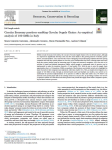
Article
Within Circular Economy (CE) studies, the concept of Circular Supply Chains (CSCs) is still not mature, although it is expected to significantly develop in the next few years thanks to the growing interest of scholars, practitioners, and policym[...]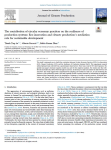
Article
This study's main goal was to clarify the correlation between Circular Economy Practices (CEP), Eco-Innovation (ECI), Cleaner Production (CLP), and the Resilience of Production Systems (RePS). This experiment research utilized primary data colle[...]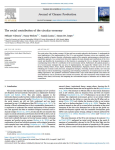
Article
M. Valencia ; N. Bocken ; C. Loaiza ; S. De Jaeger |The social value of the circular economy (CE) has only been recently explored in the literature. To understand the social implications of the implementation of the CE, a semi-systematic literature review was completed evaluating the variables of[...]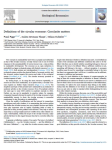
Article
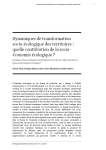
Article
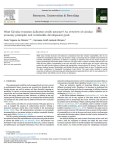
Article
While many Circular Economy (CE) indicators communicate that they measure sustainability, they do not consider the sustainability tripod. Thus, any decision to adopt a CE strategy must be carefully reasoned about its potential sustainability per[...]
Article
A transition to a circular economy (CE) affects different stakeholders - positively and negatively. Social aspects still receive little consideration in the context of CE, which is why the assessment and monitoring of the social impacts of CE st[...]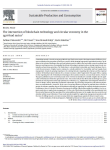
Article
A. Pakseresht ; A. Yavari ; S.A. Kaliji ; K. Hakelius |A transition towards a circular economy within the agri-food sector requires the improvement of efficiency in resource utilization, the prevention of food loss or waste, whilst adopting regenerative agricultural practices. In addition to the tec[...]
Article
Le contexte actuel de crises rend nécessaire la co-construction par le monde académique, le monde des institutions publiques et celui de l'entreprise, de nouveaux concepts de politique publique. Cet article présente et met en dialogue deux conce[...]
Article
B. Arru ; R. Furesi ; P. Pulina ; P. Sau ; F.A. Madau |Agriculture and the agri-food industry are central to fostering economic growth and the Sustainable Development Goals’ targets. However, to meet the world’s future development, it is necessary to make the agri-food system more resource-efficient[...]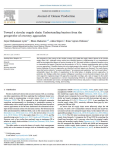
Article
S.M. Ayati ; E. Shekarian ; J. Majava ; B.V. Wæhrens |The integration of the concept of the circular economy (CE) within the supply chain is known as the circular supply chain (CSC). Although various articles have identified barriers to implementing CE, no comprehensive study has investigated the i[...]
Article
Cet article a pour objectif d’étudier l’économie écologique avec ses diverses tendances. Dans ce cadre, le focus est mis sur la « socio-économie écologique » qui entend s’appuyer sur une économie politique et institutionnelle hétérodoxe en soute[...]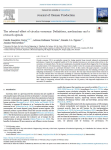
Article
Circular economy (CE) is an umbrella concept for closing material loops towards enhanced environmental performance. Despite the recognized benefits of CE, the intended outcomes are not always achieved due to the occurrence of rebound effects. Th[...]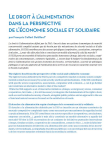
Article
Le droit à l’alimentation défini par la FAO s’inscrit dans un système économique de marché concurrentiel complété autant que de besoin par des mécanismes de sécurité sociale et d’aide alimentaire. Si l’ESS contribue avec des acteurs spécifiques [...]
Article
L’économie circulaire (EC) occupe une place prépondérante dans le discours des pouvoirs publics. Elle s’apparente à un nouveau paradigme pour le développement durable, mais le concept semble divisé entre approches théoriques et pratiques diverse[...]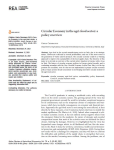
Article
Agri-food is the second manufacturing sector in Italy, due to its strategic nature. However,it is affected by several problematics, and one of the most severe is the generation of wastes and by-products. The circular economy could be a winning a[...]
Article
La question de l’alimentation concentre aujourd’hui plusieurs enjeux : donner accès à tous à des produits de qualité, limiter l’empreinte écologique du secteur agro-alimentaire, revitaliser les territoires en articulant mieux monde urbain et mon[...]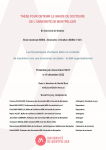
Thèse, Mémoire, Master
A.-C. Savy | 2022Depuis les années 2010, divers acteurs – économiques, instances gouvernementales, société civile – prônent une transition vers une économie circulaire (TVEC) en réponse aux déséquilibres sociétaux et à leurs enjeux respectifs. Ils rencontrent de[...]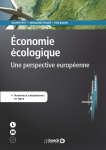
Ouvrage
O. Petit ; G. Froger ; T. Bauler | Bruxelles [Belgique] : De Boeck | Ouvertures Economiques, ISSN 0777-2831 | 2022L’économie écologique est un domaine d’analyse et une source de recommandations désormais largement reconnus au plan international à travers la publication de la revue Ecological Economics et la tenue régulière de grands congrès internationaux, [...]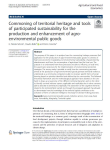
Article
G.F. Safonte ; C. Bellia ; P. Columba |The purpose of this paper is to analyze how the commoning heritage processes find application for the production of agro-environmental public goods in contexts of high socio-economic marginality and environmental vulnerability, characterized by [...]
Article
L. Rocchi ; L. Paolotti ; C. Cortina ; F.F. Fagioli ; A. Boggia |The transition from a linear to a circular economy is a research trend topic, as well as the possibility to measure the degree of circularity of products and systems. In a linear economy, raw materials are taken from nature and transformed into [...]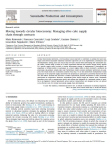
Article
M. Raimondo ; F. Caracciolo ; L. Cembalo ; G. Chinnici ; G. Pappalardo ; M. D'Amico |Circular bioeconomy represents a recent political vision expected to contribute in tackling the main challenges faced when sustainable industrial transition trajectories are to be implemented. Coordination and interdependence among actors are cr[...]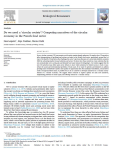
Article
How a circular economy (CE) can promote social equity remains largely unknown. We analyze how CE narratives affect interpretations of problems and actions on waste in the French food sector, particularly around the Loi Garot. We identify CE narr[...]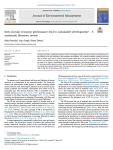
Article
R. Panchal ; A. Singh ; H. Diwan |The paper provides a systematic literature review to investigate whether circular economy (CE) performance in the technical cycle will contribute to the sustainable development. Two academic databases, namely Scopus and Web of Science were used [...]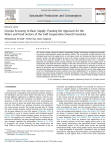
Article
M. Al-Saidi ; P. Das ; I. Saadaoui |The circular economy concept can enhance sustainability through restructuring consumption and production patterns using innovative designs and business models. This core premise is highly relevant for the interlinked water and food supply sector[...]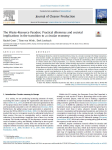
Article
The European Union has vowed to transition from a linear to a circular economy (CE). Many innovations, new business models, and policies have begun to emerge to support the push for further institutionalizing CE practices. A large portion of the[...]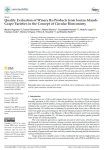
Article
M. Xagoraris ; I. Oikonomou ; D. Daferera ; C. Kanakis ; I.K. Lappa ; C. Giotis ; C.S. Pappas ; P.A. Tarantilis ; E. Skotti |The aim of this work was the study and evaluation of winery by-products in the framework of the circular bioeconomy. Grape seeds and grape skins from Greek Ionian Islands varieties were analyzed in an attempt to provide the appropriate basis for[...]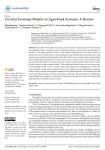
Article
M. Hamam ; G. Chinnici ; G. Di Vita ; G. Pappalardo ; B. Pecorino ; G. Maesano ; M. D'Amico |Around the world, interest is growing in the circular economy in response to the current unsustainable model of production and consumption based on increased use and depletion of resources. This paper provides a review of the academic literature[...]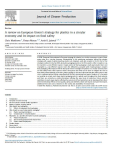
Article
C. Matthews ; F. Moran ; A.K. Jaiswal |In 2018, European Union adopted a European strategy for plastics in a circular economy as a part of their action plan for a circular economy. Sustainability is the underlying motivation behind the plastics strategy with a goal of addressing how [...]
Article
M. Donner ; A. Verniquet ; J. Broeze ; K. Kayser ; H. De Vries |For a transition from a linear, ‘take-make-dispose’ economy to a sustainable usage of all constituents of renewable resources in cascading and circular pathways, new business models valorising streams that are currently considered as waste are n[...]









